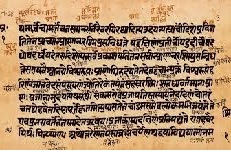The Evolution of Books
Introduction
In the digital age, we often take the humble book page for granted.
However, the evolution of books pages is a fascinating tale of innovation, craftsmanship, and cultural significance.
From ancient scrolls to the modern printed book, the history of book pages has played a pivotal role in the dissemination of knowledge and the preservation of human history.
Join us on this journey through time, as we explore the captivating evolution of books pages, enriched with informative diagrams.
1. The Ancient Scrolls (Approx. 3000 BCE – 4th Century CE)
Long before the invention of the printing press, ancient civilizations utilized scrolls as the primary medium for writing and recording information.
These scrolls were made from various materials, including papyrus, parchment, and silk.
Ancient civilizations, including the Egyptians, Greeks, and Romans, utilized scrolls to preserve sacred texts, historical accounts, and literary works.

2. The Codex Revolution (1st Century CE)
The transition from scrolls to the codex format was a monumental leap in the history of bookmaking.
The codex, an early form of the modern book, featured pages bound together on one side, akin to the books we use today.
This innovation allowed for easier access to specific content and facilitated quicker reference.

3. Handwritten Manuscripts (5th – 15th Century CE)
Medieval scribes meticulously copied texts by hand onto parchment or vellum pages.
These exquisite manuscripts adorned with intricate illustrations and decorative elements became cherished works of art.

4. The Printing Press Revolution (15th Century CE)
The invention of the printing press by Johannes Gutenberg in the 15th century revolutionized book production.
Movable type allowed for faster and more efficient printing, making books accessible to a broader audience.
Printed pages brought about a significant transformation in the spread of knowledge and ideas.

5. The Rise of Modern Printing (18th – 19th Century CE)
Advancements in printing technology during the Industrial Revolution further accelerated book production.
Steam-powered presses and mechanized typesetting increased the speed and volume of book production, making books more affordable and widespread.
6. Papermaking and Mass Production
The invention of papermaking, initially in China, and later spreading to the West, was a crucial step in the mass production of books.
Paper became the preferred material for book pages due to its cost-effectiveness and versatility.

7. Digital Age: eBooks and Beyond
In the 21st century, we witnessed the rise of eBooks and digital publishing.
Digital formats revolutionized the way we consume and interact with content, making vast libraries accessible at our fingertips.
Conclusion
The history of book pages is an incredible journey that reflects the ingenuity and creativity of humankind.
From the ancient scrolls to the modern digital age, the evolution of book pages has shaped the way we acquire knowledge, preserve culture, and share stories.
As we embrace new technologies, it is essential to remember the rich heritage of bookmaking and the profound impact it continues to have on society.
Let us celebrate the beauty of the written word and cherish the pages that hold the wisdom of ages past! 📚✨
What is Augmented Reality (AR) ?
References:
https://study.com/learn/lesson/books-invention-history-evolution.html












